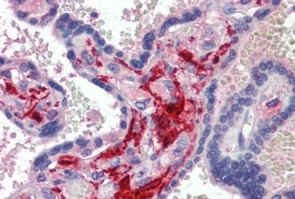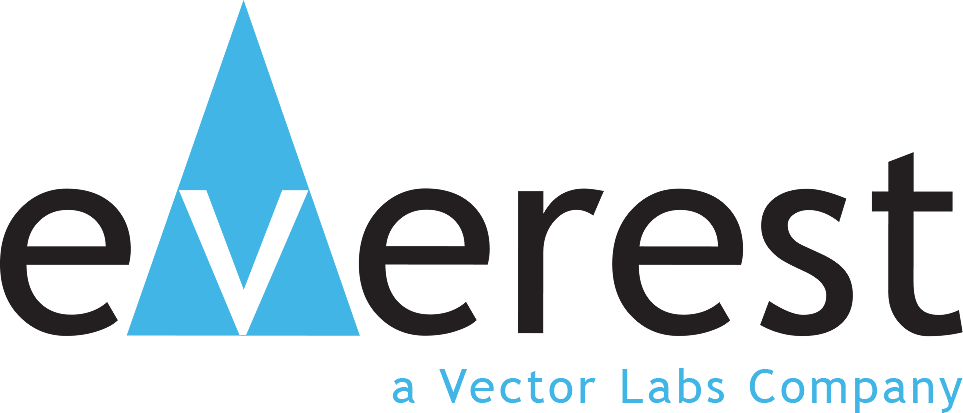Factor XIIIa antibody [N1N3]
GTX110434
ApplicationsImmunoFluorescence, Western Blot, ImmunoCytoChemistry, ImmunoHistoChemistry, ImmunoHistoChemistry Paraffin
Product group Antibodies
ReactivityHuman, Mouse
TargetF13A1
Overview
- SupplierGeneTex
- Product NameFactor XIIIa antibody [N1N3]
- Delivery Days Customer9
- Application Supplier NoteWB: 1:500-1:3000. ICC/IF: 1:100-1:1000. IHC-P: 1:100-1:1000. *Optimal dilutions/concentrations should be determined by the researcher.Not tested in other applications.
- ApplicationsImmunoFluorescence, Western Blot, ImmunoCytoChemistry, ImmunoHistoChemistry, ImmunoHistoChemistry Paraffin
- CertificationResearch Use Only
- ClonalityPolyclonal
- Concentration1.97 mg/ml
- ConjugateUnconjugated
- Gene ID2162
- Target nameF13A1
- Target descriptioncoagulation factor XIII A chain
- Target synonymsF13A, coagulation factor XIII A chain, FSF, A subunit, TGase, bA525O21.1 (coagulation factor XIII, A1 polypeptide), coagulation factor XIII, A polypeptide, coagulation factor XIII, A1 polypeptide, coagulation factor XIIIa, factor XIIIa, fibrin stabilizing factor, A subunit, fibrinoligase, protein-glutamine gamma-glutamyltransferase A chain, transglutaminase A chain, transglutaminase. plasma
- HostRabbit
- IsotypeIgG
- Protein IDP00488
- Protein NameCoagulation factor XIII A chain
- Scientific DescriptionThis gene encodes the coagulation factor XIII A subunit. Coagulation factor XIII is the last zymogen to become activated in the blood coagulation cascade. Plasma factor XIII is a heterotetramer composed of 2 A subunits and 2 B subunits. The A subunits have catalytic function, and the B subunits do not have enzymatic activity and may serve as plasma carrier molecules. Platelet factor XIII is comprised only of 2 A subunits, which are identical to those of plasma origin. Upon cleavage of the activation peptide by thrombin and in the presence of calcium ion, the plasma factor XIII dissociates its B subunits and yields the same active enzyme, factor XIIIa, as platelet factor XIII. This enzyme acts as a transglutaminase to catalyze the formation of gamma-glutamyl-epsilon-lysine crosslinking between fibrin molecules, thus stabilizing the fibrin clot. It also crosslinks alpha-2-plasmin inhibitor, or fibronectin, to the alpha chains of fibrin. Factor XIII deficiency is classified into two categories: type I deficiency, characterized by the lack of both the A and B subunits; and type II deficiency, characterized by the lack of the A subunit alone. These defects can result in a lifelong bleeding tendency, defective wound healing, and habitual abortion. [provided by RefSeq]
- ReactivityHuman, Mouse
- Storage Instruction-20°C or -80°C,2°C to 8°C
- UNSPSC12352203
References
- Picarsic J, Pysher T, Zhou H, et al. BRAF V600E mutation in Juvenile Xanthogranuloma family neoplasms of the central nervous system (CNS-JXG): a revised diagnostic algorithm to include pediatric Erdheim-Chester disease. Acta Neuropathol Commun. 2019,7(1):168. doi: 10.1186/s40478-019-0811-6Read this paper






![IHC-P analysis of human placenta using GTX01879 Factor XIIIa antibody [E980.1]. The target signal localized in the Hofbauer cells of the placental villi.](https://www.genetex.com/upload/website/prouct_img/normal/GTX01879/GTX01879_20200811_IHC-P_90_w_23053121_652.webp)
